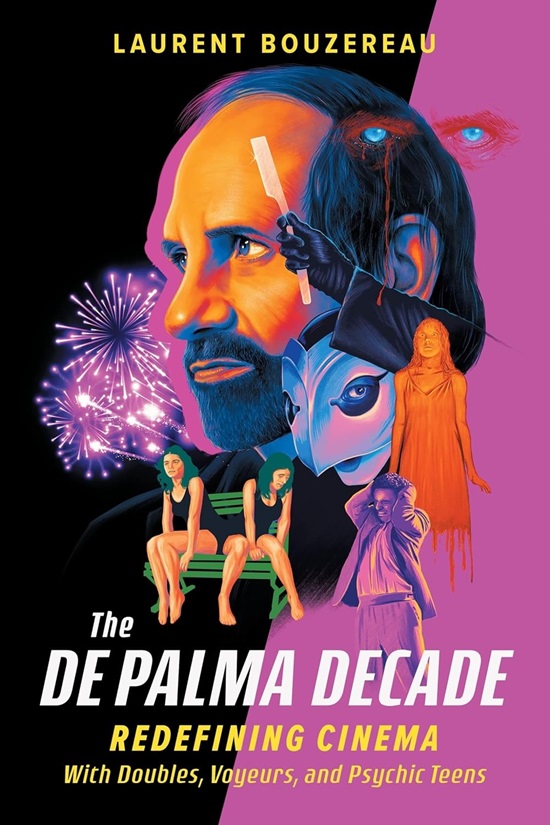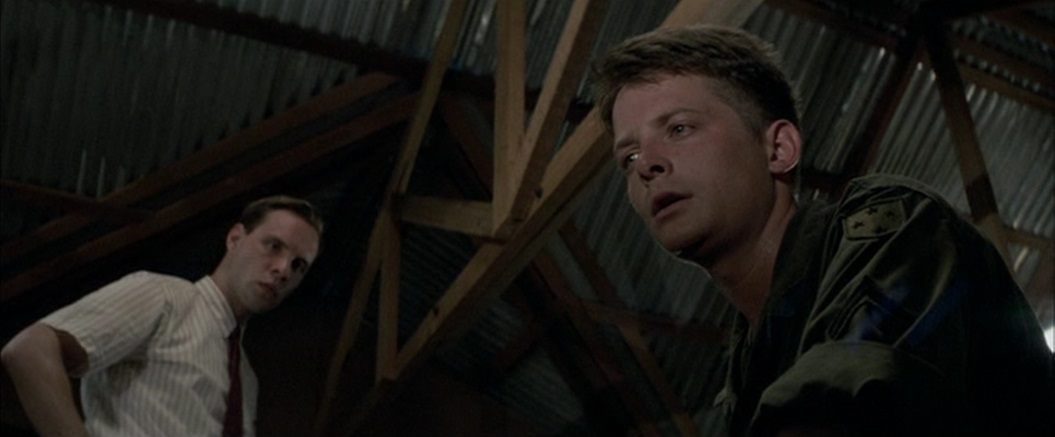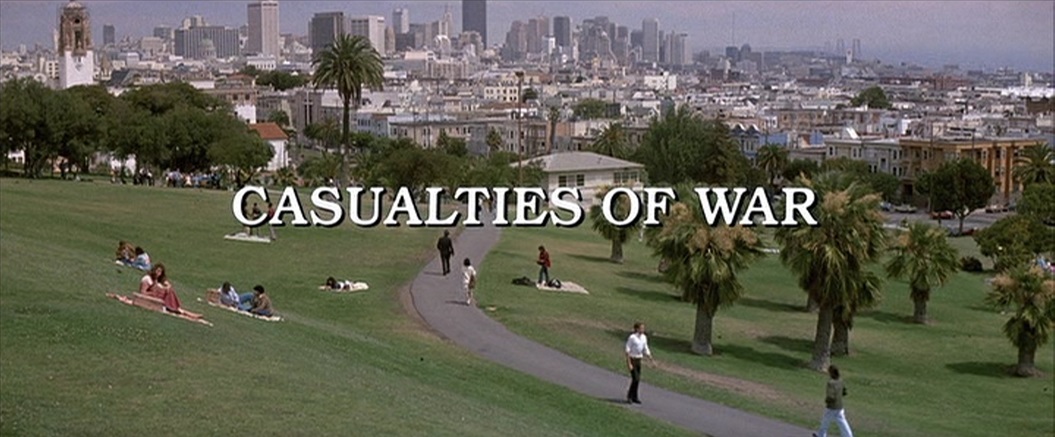THINGS IN DE PALMA'S FILMS THAT BOUZEREAU HAD PREVIOUSLY THOUGHT WERE FLAWS, "I DON'T SEE THEM THAT WAY ANYMORE"

Reviews of Laurent Bouzereau's new book, The De Palma Decade, began posting today. Some excerpts from the reviews are below. But first, an excerpt from Stephen Witty's NJ Arts article, "Reevaluating the provocative and stylish — but often overlooked — Brian De Palma", for which Whitty spoke to both Bouzereau and Glenn Kenny, who recently published The World Is Yours: The Story of Scarface:
So why has De Palma been so frequently overlooked?“He made very provocative movies,” says Bouzereau. “The reviews would always call him a Hitchcock copycat. Maybe that perception stayed. When I was growing up in France and discovered him in the ’70s and became literally obsessed, he was kind of a pariah already.”
Acceptance seems to have come only gradually.
“I was always a fan, but I thought I understood his shortcomings as a creative and a craftsman,” Kenny says. “Now, though, a lot of the things that I thought were flaws in ‘Dressed to Kill’ and ‘Body Double’ and ‘Blow Out’ … I don’t see them that way anymore. I see more clearly what he was doing, and what he was trying to do.”
Nikkolas Nelson, Movie Jawn:
I didn’t know I knew who Laurent Bouzereau was. I watched his documentary, Five Came Back, when it was released on Netflix. Then, in the middle of reading this book, I watched his most recent documentary, Faye, about actor Faye Dunaway, on MAX, and didn’t realize Bouzereau directed it until the end. If you want to know what to expect from the book before reading it, I definitely recommend watching one of Laurent’s documentaries. I love film documentaries. Whether it’s something like Belushi or In Search of Darkness or Electric Boogaloo—they all make me happy, I have seen dozens of them, and I can say unequivocally, when it comes to biographical documentaries, I think Laurent stands in a class all of his own.The documentaries are organized, composed, and communicated in a way that is simultaneously logical and emotional—highlighting the humanity of the subject(s), their contributions to the art of film, and peppered everywhere else is what Laurent seems to personally admire about them—which becomes what you suddenly admire about him. They are infectious. They pull off this magnificent magic trick of making you want to live in that time and place and know these people and, upon exiting, realizing that’s exactly what you just experienced. Or, of course, as close to that as a documentary can possibly bring you. Like, a couple times, I got pissed off on behalf of Faye Dunaway. And I hold grudges. That’s the kind of power Laurent Bouzereau has and that very same magic and power is seamlessly transferred to The De Palma Decade.
In preparation for this book review, I wanted to see all of the referenced De Palma films I had yet to see. I was not ready. I was not ready for Phantom of the Paradise or Obsession or The Fury. By that I mean, I had a ‘90’s idea of Brian De Palma in my youth. Then, a more contemporary idea in adulthood. And then, I had to break my brain and squeeze in a third idea of who Brian De Palma was and, at that point, I was unmoored. I am convinced that Brian De Palma is a time-traveler, he’s from the future (and/or completely outside of time and space), and he specifically traveled to America in the 1970’s, to make films that were bound by the technology of the time, all because he wanted the goddamn challenge. Reading The De Palma Decade, I think there’s an element of truth in that unhinged theory.
The book covers the first ten years of Brian De Palma’s filmmaking career, separating the films thematically instead of chronologically: The Split—Sisters (1972) and Dressed to Kill (1980); The Power—Carrie (1976) and The Fury (1978); The Tragedies—Phantom of the Paradise (1974), Obsession (1976), and Blow Out (1981). Each section contains incredibly insightful analysis of De Palma’s filmmaking techniques, cast and crew interviews (including De Palma himself), and, what I particularly enjoyed, direct reflection from Laurent hiimself on how the films impacted their life.
For anyone looking to be introduced to Brian De Palma, I would wholeheartedly recommend The De Palma Decade. I would watch the films in the order of the book and after watching each, read the corresponding chapter. Then, I would rewatch all of the films again in chronological order so you can see the evolution of this filmmaker in real time. If I were teaching a film studies class, I would devote an entire semester of study to this with The De Palma Decade as the assigned textbook. I am officially in awe of Laurent Bouzereau and sincerely cannot wait for his next project. In the meantime, he has plenty of documentaries I haven’t yet seen and plenty of books I haven’t yet read. I consider Laurent Bouzereau to be any film critic’s aspiration and inspiration.
Chris Vognar, Los Angeles Times:
Bouzereau did some reporting, and some of his subjects actually have something to say. De Palma talks about the importance of music in setting the tone for his long, dialogue-free scenes (like that museum sequence). Hirsch riffs on the different approaches taken by “The Fury” stars Kirk Douglas and John Cassavetes: Douglas, who attacked his role with vim, came in hot but fizzled in later takes, while it took Cassavetes, who often booked acting jobs to help pay for the movies he wanted to make himself, about 10 takes to get loose. Nestled between the platitudes of “The De Palma Decade” are some genuine insights into the filmmaking process.But the author’s unabashed adoration of De Palma can be a hindrance to deeper understanding. Bouzereau touches on the primary controversy surrounding “Dressed to Kill,” that “De Palma conflates transness with mental illness and homicidal behavior.” Caine’s character does indeed come across as a trans person whose conflicted identity leads him to kill. Here we go. Bouzereau is going to ask his hero how he views all of this now. And then … he doesn’t. Instead, De Palma says a little about how his screenplay for “Cruising,” a movie ultimately written and directed by William Friedkin, led to some of his ideas for “Dressed to Kill.” With that, the author lets him skate, onto the next platitude. Early on, Bouzereau writes that he has “no intention here to make a social treaty or statement or defend the controversial aspects of De Palma’s work” (perhaps he means “treatise,” not “treaty”). Fair enough. But the idea of handling such a gleeful provocateur with kid gloves seems to somehow miss the point of De Palma’s work.
The book covers seven films, organized thematically into three sections: The Split (“Sisters” and “Dressed to Kill”), The Power (“Carrie” and “The Fury”) and The Tragedies (“Phantom of the Paradise,” “Obsession” and “Blow Out”). “The Split,” of course, has multiple meanings for De Palma, who used split screens not merely as an aesthetic exercise: Like many an artist of the macabre, going back at least to Edgar Allan Poe, he also made bloody hay out of the theme of doubling, and the terror and instability inherent to the idea of a divided self.
By the time he made “Sisters,” in 1972, De Palma had already done a few scrappy counterculture features, including “Greetings” (1968), “The Wedding Party” (1969) and “Hi, Mom!” (1970). But “Sisters,” a proper freakout starring Margot Kidder, playing conjoined twins, is the first of what we now think of as a De Palma movie: a psychosexual nightmare with madman instincts. Viewed with the hindsight of 52 years, it feels of a piece with other rule-breaking, devil-may-care horror films of the period, including George Romero’s “Night of the Living Dead” (1968), Wes Craven’s “The Last House on the Left” (1972) and David Cronenberg’s “Shivers” (1975).
It is, in other words, the real deal. Paradoxically, it also marks De Palma’s true entry into the sincerest form of flattery, the imitation game. Bouzereau starts his defense early, asking, “Is it fair to label De Palma a copycat? Isn’t he, rather, the legitimate heir to the Hitchcock kingdom?” He may, in fact, be both.
De Palma’s slavish emulation of Hitchcock runs through numerous films, and with notable specificity. Someone witnesses a murder in the apartment across the way, a la “Rear Window” (“Sisters,” “Body Double”). A blond star is murdered in a movie’s first act, as in “Psycho” (“Dressed to Kill,” which also throws in a couple of shower scenes and an obtuse expert explaining why a man dresses as a woman). He bows to “Vertigo” on multiple occasions, including “Blow Out” (man suffers the same tragedy twice, unable to prevent murders he has indirectly enabled) and, more directly, “Obsession,” about a grief-stricken man who reconstructs a lost lover. In these movies De Palma is almost like a hip-hop producer, mixing samples of different songs to create a new whole. He is director as collagist.
By focusing on De Palma’s ‘70s output (“Blow Out” and “Dressed to Kill” are technically early-‘80s movies, but exact decades can be imprecise markers of an artist’s thematic output), the book opts to pull up short of the director’s next, in many ways more eclectic, period. The ‘80s brought, among others, the opulence of “Scarface” (the subject of a pair of recent books, by Glenn Kenny and Nat Segaloff), the undiluted sleaze of “Body Double,” the mainstream success of “The Untouchables” and the underrecognized Vietnam War drama “Casualties of War.” If you seek a more comprehensive study, check out Noah Baumbach and Jake Paltrow’s fine 2015 documentary “De Palma.” In “The De Palma Decade,” the filmmaker gets a more precise spotlight. And he couldn’t have asked for a more devoted fan to shine it.
David Stewart, The Arts Fuse
Like the volumes from Kenny, Blumenfeld, and Vachaud, Bouzereau’s study focuses on De Palma’s films (he sticks to the director’s high period, from 1973’s Sisters to 1981’s Blow Out). But this cinematic love letter contains more than in-depth commentary: there’s biography, oral history, and personal reflection. The result is a playful, even whimsical, contribution to the effort to consolidate De Palma’s auteur status, to evaluate De Palma’s reputation as one of America’s most important, though divisive, filmmakers.Bouzereau wrote a previous book on the filmmaker, so he knew he had to bring something fresh to the table. There are new interviews with the director and his collaborators, including actors Nancy Allen, Sissy Spacek, and John Lithgow, production designer Jack Fisk, composer Paul Williams, and editor Paul Hirsch. The interviewees offer considerable insight into De Palma’s execution of action, from the prom scene in Carrie to the use of split screen in Sisters and the climatic Steadicam chase in 1993’s Carlito’s Way. This said, the book offers, at times, a retread of the information in Noah Baumbach and Jake Paltrow’s addictive 2016 documentary, De Palma, released by A24, the home of De Palma disciples Ari Aster (Hereditary, Beau is Afraid) and Ti West (The MaXXXine trilogy). Still, Bouzereau ventures into uncharted territory that should please die-hard cineastes, posing the question of why Hi Mom! and Get to Know Your Rabbit haven’t received the same scalpel-sharp analysis given to the director’s other early films. And the chapter on Phantom of the Paradise, particularly Williams’ recollection of writing his song “Old Souls” is moving. (Note: there’s a delightful story in the book about Orson Welles trying to get his film The Other Side of the Wind up and running.)
Keep in mind that Bouzereau is a fanboy. This is a deeply personal reflection on the films of a director he places in a higher slot in the pantheon than Alfred Hitchcock. Unlike the probing Hitchcock/Truffaut, the oral history and analysis here tends to excessively soft on De Palma’s failures. The interviews are a mixed bag. Cliff Robertson’s “aw shucks” take on shooting Obsession contentedly stays at the level of the actor’s tan and ego while Spacek and Fisk are tender (and perceptive) about their working and personal relationship on Carrie. As for De Palma’s ultimate standing among the gods of cinema, put me down as a skeptic regarding some of his films. 1984’s Body Double wasn’t so much a thriller as a comedic pastiche on porn chic Los Angeles while 2006’s The Black Dahlia was a very frustrating product — it is a muddled adaptation of James Ellroy’s novel, its narrative undercut by flaccid dramatic tension. Still, if you approach the book’s hyperbole with caution, The De Palma Decade has the merits of Bouzereau’s documentaries Five Came Back and Faye: it is a thoroughly enjoyable portrait of a counterculture master of the scream scene. At its finish, I couldn’t help but utter one of De Palma’s customary exclamations, “Holy Mackerel!”
















































































